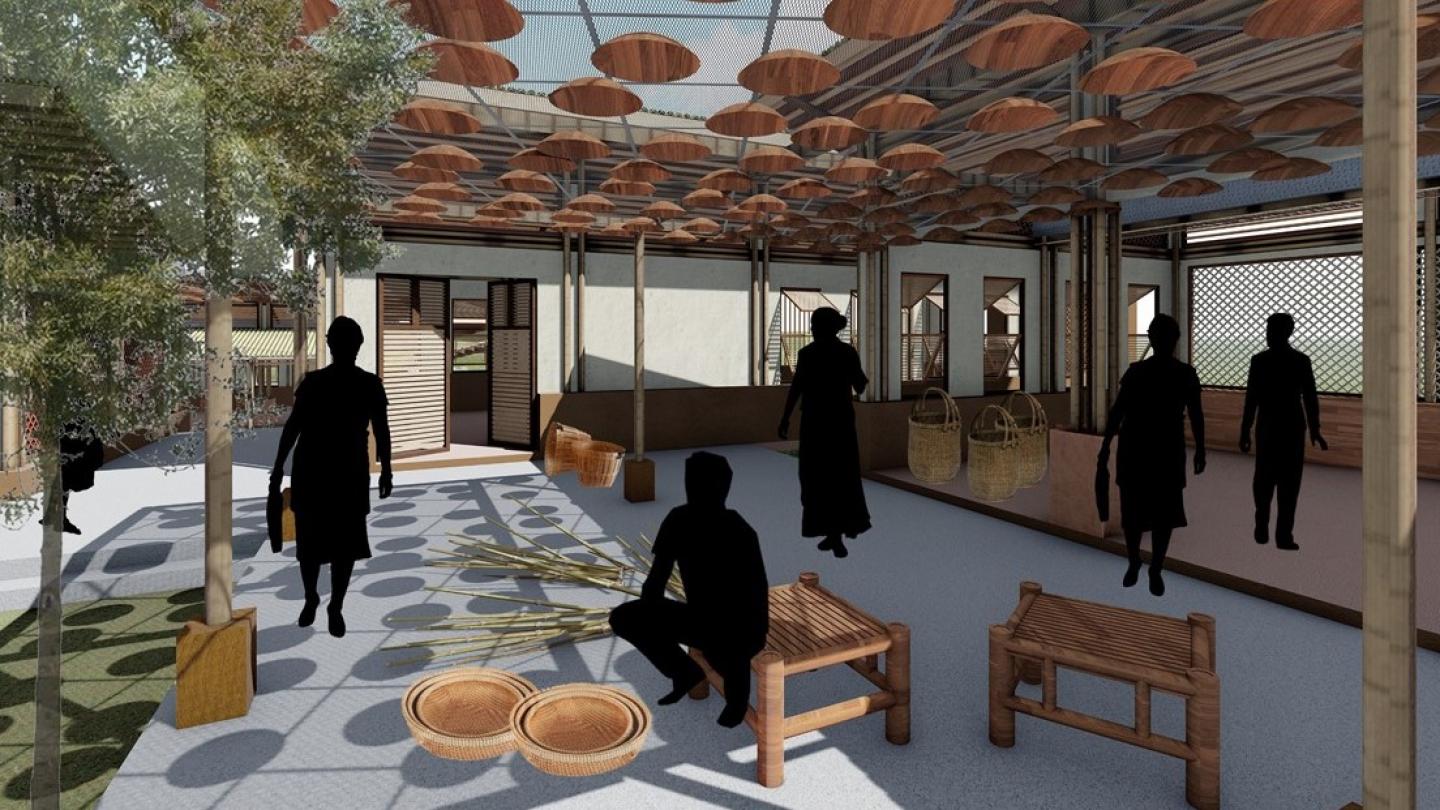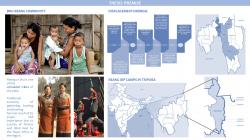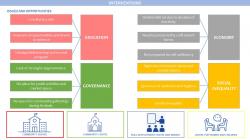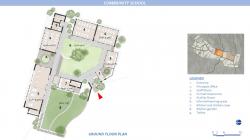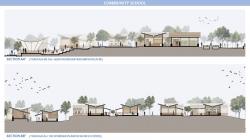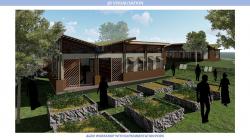People experience a contrasting relationship with places depending on how spaces around them reciprocate and encourage to develop communication through physical, social, cultural, and psychological elements. Thus, when people are displaced from their homes, they not only lose the physical attributes, but also the socio-spatial, cultural, and economic traits. It is the loss of connection with the surroundings, experiences, and memories. Displacement has various impacts on the community.
These effects usually continue even after rehabilitation as during the displacement period the community is completely dependent on doles and government. From the site study and interviews with the community it was evident that it was necessary to invest in certain areas to have a smoother transition from the camps to a full-fledged village. Out of all the issues 4 opportunity areas were identified. These interventions are a school, community centre, skill centre and a safe haven for vulnerable groups.
The main aim of the project is to create a set of programs that will complement their needs when they transition from the camp to a different setting. The project maintains their traditional identity and spatial development of spaces and improve their lives in the subsequent years.
Through development of social and economic infrastructure in marginalized communities also reduces power imbalance/ domination and promote integration. This project alongside purely educational and economic needs is trying to address a greater task that architecture can be a tool for – reassuring the community of their belonging and making them proud of living here.
2021
0000
Location- Tripura
Interventions-
1. Community school
2. Community centre
3. Skill development centre
4. Centre for vulnerable population
Shreya Kejriwal
